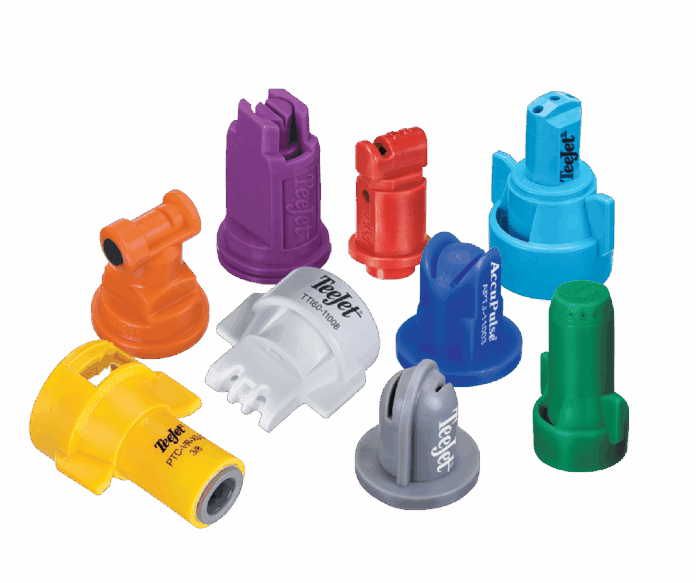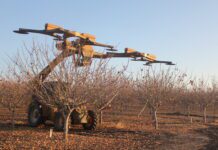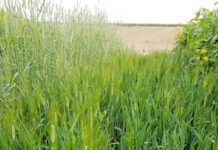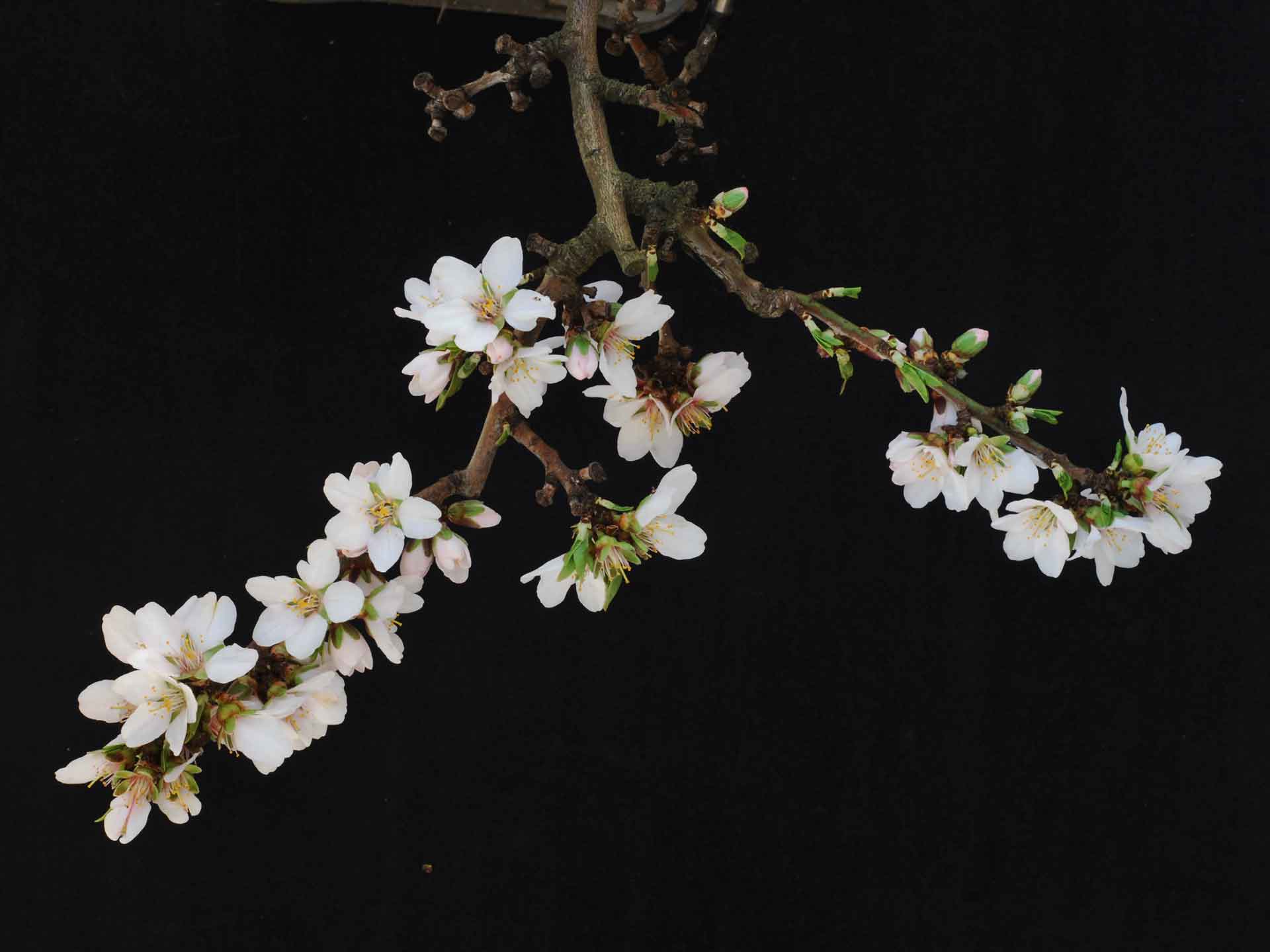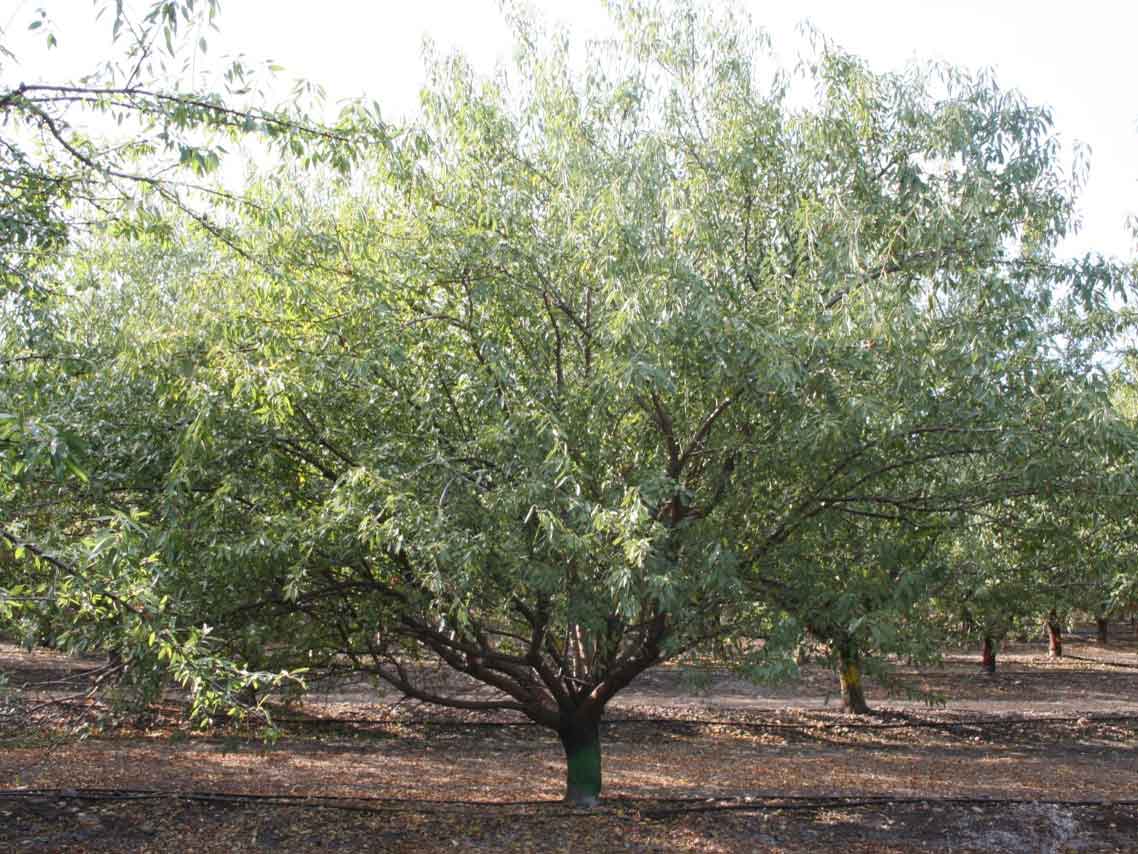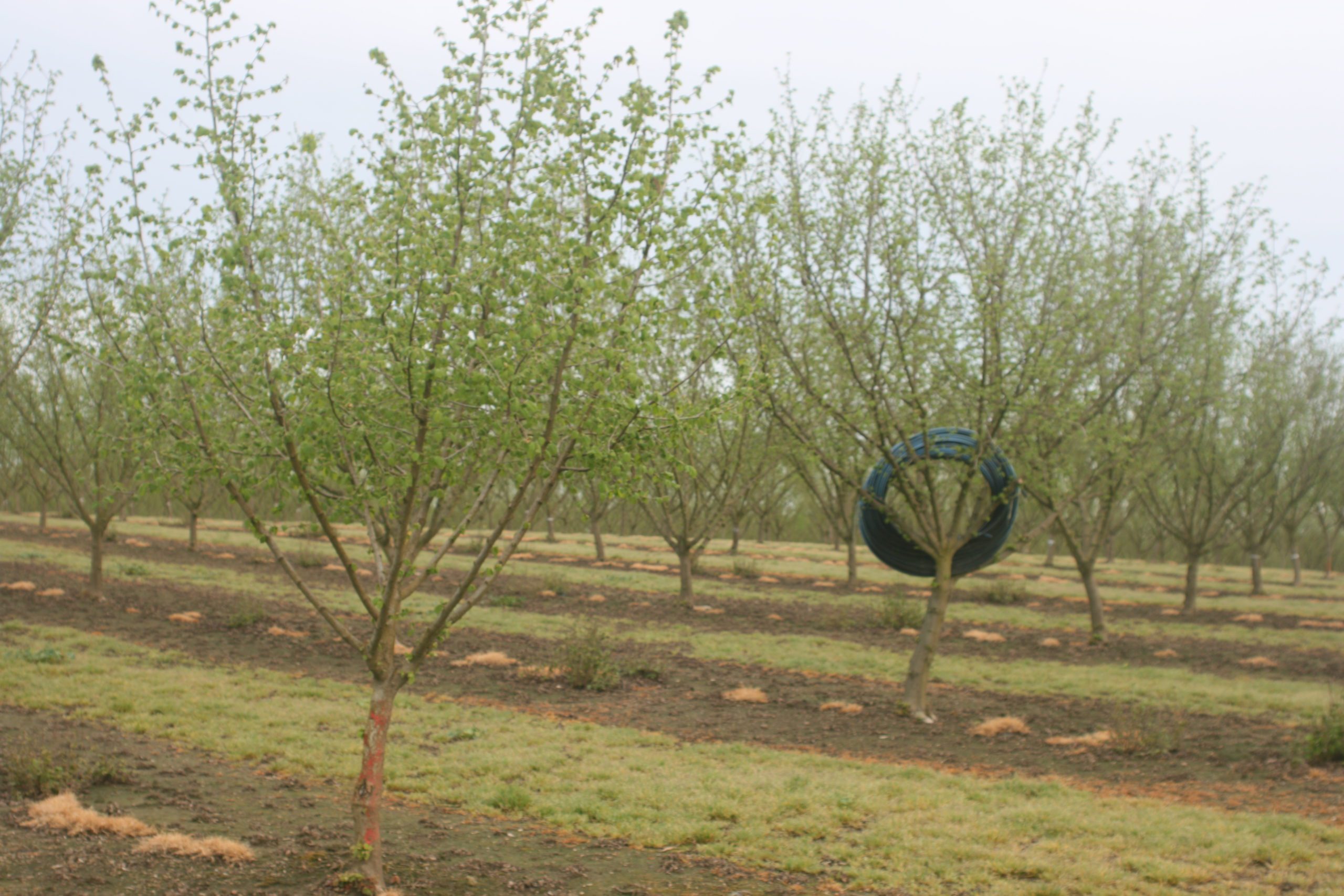The secret to conserving liquids in the orchard, from pesticides to water, rests in the humble nose of the nozzle. Depending on the size of the orchard and the operation, the liquid-spray machinery, often worth many thousands, depends on the precision of the small nozzles, which cost $8 or less.
“It really is the last thing people think about when they purchase a machine,” said Andy Hooper. Hooper is regional sales manager serving California, Arizona, Utah and Nevada for TeeJet Technologies. With more than 500 employees, TeeJet is one of the largest U.S.-based manufacturers of agricultural nozzles, distributing internationally.
The Nozzle Revolution
The nozzle has been around for centuries, but in the 1930s, advances in manufacturing technology improved nozzles to address the increased use of sprayed chemicals. Progress continues today as nozzles adapt to modern spray machinery using internet, computerized and aerial technology.
Before calibrated nozzles graced the tips of spray machinery, liquid applications went through a one-size-fits-all nozzle, offering little control to the operator. But market, research and ecological changes have revolutionized the nozzle. The changing landscape in which tree nut growers operate continues to prompt renovations in spray technology, with the nozzle at the tipping point.
Among early innovations, nozzle manufacturers began working with pesticide manufacturers and university researchers to design nozzles to deliver specific droplet sizes, carrier volume (as in gallons per acre) and distribution patterns. By 1968, Spraying Systems, parent company of TeeJet, developed the first electronic droplet size analyzer, and manufacturers began creating nozzles to address challenges in the field. Researchers at universities, such as UC Davis, Oregon State University and Purdue, confirmed applying the right pesticide with the wrong nozzle would yield unwanted results.
In addition to modern technology, nozzle updates also reflect historic changes in agricultural practices in the orchard, reduced tillage, cover crops between the rows, new pests, updated orchard designs, markets and customer preferences. Automated rate controllers came to the fore in the 1980s, causing the nozzle to generate a constant pressure and flow at the nozzle, aside from speed and topography, eliminating over- and underdoses. Today, pulse width modulation (PWM) technology makes the rate controllers nearly obsolete, adding consistent droplet size and other controls to the mix. Most catalogs, including TeeJet’s, list which nozzles work with PWM technology.
In the 1990s, nozzles changed again as rules were set in place to control drift, a concern already in play for tree nut growers near urban areas. Researchers and manufacturers worked together to replace conventional nozzles producing microscopic droplets with nozzles that more precisely fit the farm’s needs. Chemical companies worked more closely with manufacturers to match products with appropriate nozzles, promoting low-drift options. The push led to nozzles with air injection ports and turbulence chambers, creating larger droplets.
“Nozzles that reduce drift is a big issue in California and actually everywhere,” Hooper said.
Growers now have choices for spraying with modern tips that create a larger droplet. “A larger droplet is heavier, more likely to not move off target,” he said.
Today, injection molding manufacturing brings inexpensive and precise nozzles to the market, but it also increases the options growers have. Where once nozzles were cut from stainless steel and brass, today thermoplastic materials are designed in ways that metal can’t duplicate. Cost-effective and corrosion-resistant, these myriad color-coded nozzles make it easier for growers to choose the right nozzle for their crops.
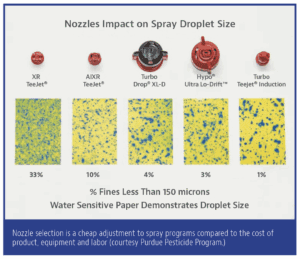
Maintain, Repair and Replace
Whether a grower is operating their grandpa’s Air-O-Fan sprayer or a new and computer-operated rig, if nozzles are worn, damaged or not used as intended, performance is degraded, according to Purdue’s 103-page review.
Manufacturers, growers, researchers and engineers agree. Simple maintenance, repairs, upgrades and replacements to nozzles can save growers gallons of liquid and hours of time.
Like tires on a car, maintaining nozzles on orchard spraying equipment can extend the use and efficiency of the machine, Hooper said.
Dr. Peter Larbi, an engineer and research specialist at UC ANR, said nozzles are the last place the liquid touches before it goes onto the target. “The critical part is to maintain the nozzle. If it hasn’t been used during the season, nozzles plug. Clogged nozzles don’t work.”
Hooper said nozzles should be cleaned, recalibrated and, if needed, replaced to be sure the sprayer is delivering liquid as expected. Spraying weeds with clogged nozzles could leave strips of untreated or undertreated plants, requiring more passes later in the season.
Maintenance: Do This, Don’t Do That
DON’T use abrasive materials or objects to clean nozzles (paper clips, knives, metal picks).
DO use a nylon bristle brush to clean the outside of the nozzle.
DO clean the inside of a nozzle with a soft brush, air or water pressure.
DO check nozzles for wear, noting deformities in the exit orifice and in the spray pattern.
DON’T count on the human eye. It is not the best judge of nozzle performance.
DO assume your nozzle will eventually wear out. Factors depend on quality, product use, spray pressure, tip material, acreage applied and cleaning practices.
DO flush out spray systems and nozzles with water after use to avoid buildup.

When to Replace
Replacing nozzles annually can be cheaper than the time it takes to service them for some growers. For others, hands-on testing is a good off-season nozzle bonding activity.
Old-school methods of testing nozzle efficiency include collecting spray output from each nozzle for 30 or 60 seconds and comparing the results to the rating stamped on the nozzle, according to Hooper. If it is off by more than 10%, replace the nozzle, he said.
Confused about which cone nozzles, tapered nozzles, flat nozzles, fan nozzles, solid stream nozzles for fertilizers, nozzle tip screens and strainers to reduce plugging, caps to hold screens and prevent leaks, turrets to hold multiple nozzles or valves to reduce dripping are right? The TeeJet Catalog 52 has 204 pages of nozzle information, use and tips in addition to its products. Download the one-page UC Davis Extension nozzle guide or Purdue University’s publication, PPP-153, a review of agricultural nozzles, all listed below. Better yet, call up Andy Hooper, whose job it is, in addition to sales, to walk growers through the weeds, so to speak.

Too many nozzles and too little time? Hooper suggests the SpotOn Digital Calibration device, placed under each nozzle to collect liquid at 40 pounds per square inch. The device quickly shows the flow rate in gallons or ounces per minute.
Each grower’s circumstance will determine whether repairing or replacing nozzles is the right decision.
“Compared to the costs of the pesticide and fertilizer products, equipment and labor, the costs of replacing a set of nozzles are a relatively cheap investment,” according to the Purdue review. If replacement is the choice, experts suggest it is an opportunity to evaluate whether the nozzles currently being used are still the best option.
Resources
Applicator’s Guide to Spray Droplet Size, Drift, Nozzle Selection and Spray Coverage, UC Cooperative Extension: https://ucanr.edu/sites/viticulture-fresno/files/135186.pdf
Agricultural Spray Nozzles, a Comprehensive Review, Purdue University Publication, PPP-153: ag.purdue.edu/department/extension/ppp/resources/ppp-publications/index.html
TeeJet Catalog 52: www.teejet.com/resources/catalogs-and-bulletins
Oregon State University’s Extension publication EM 9316 – Maintenance of Air Blast Sprayers: https://extension.oregonstate.edu







